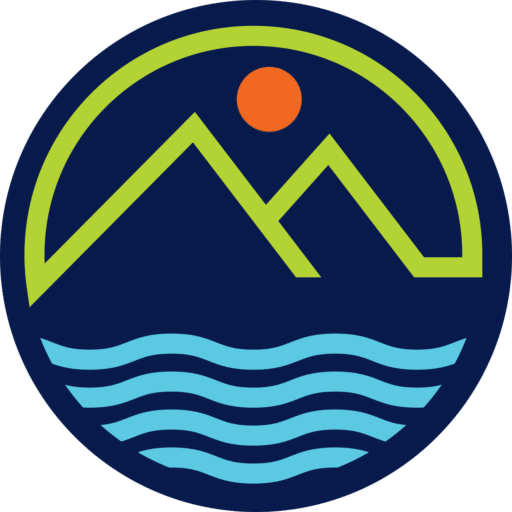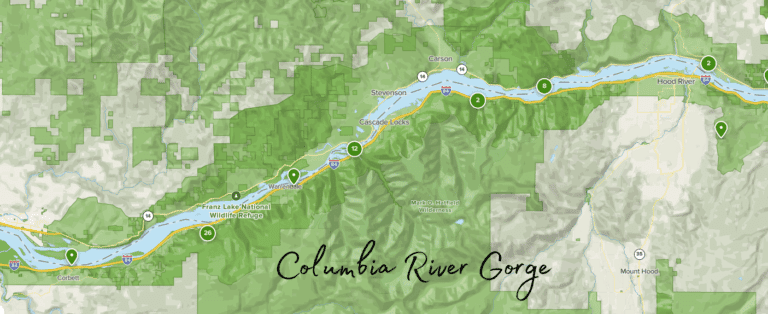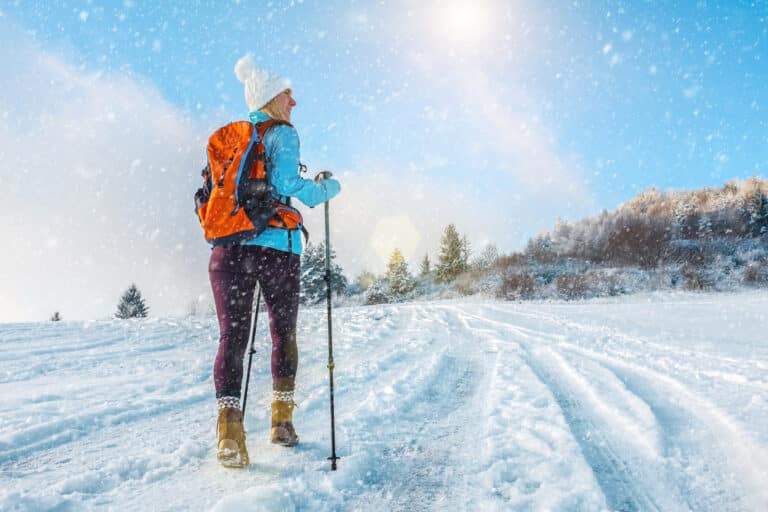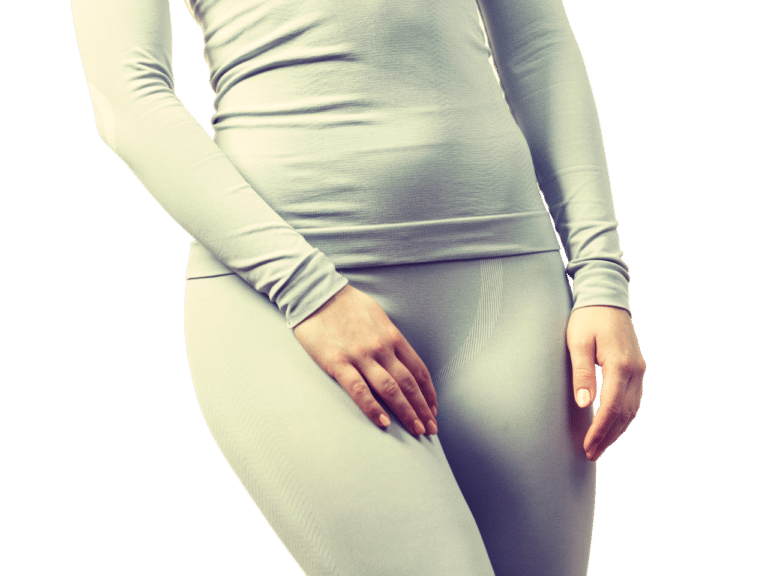A Beginner’s Guide to Kayaking: Paddle Your Way to Adventure
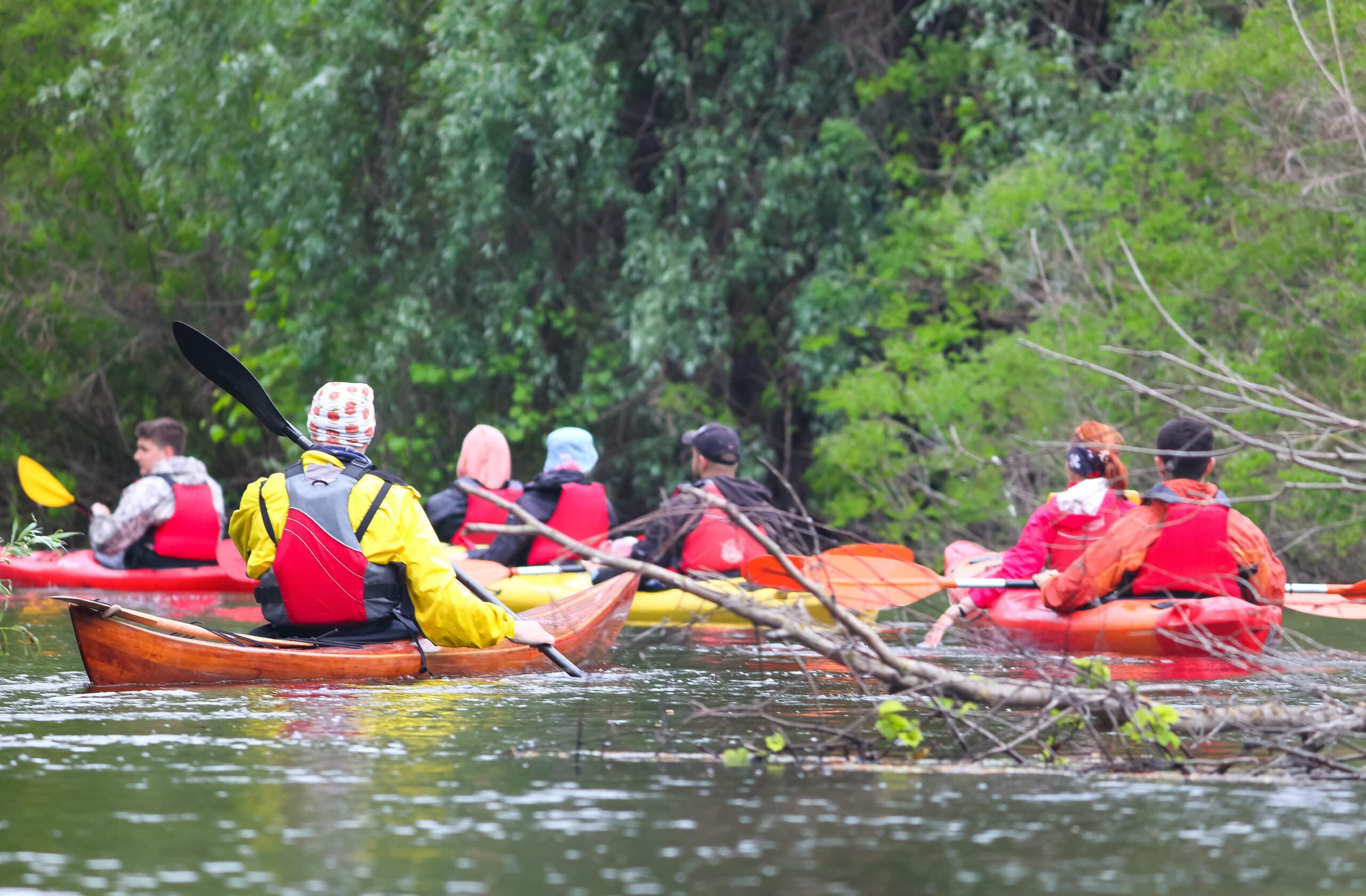
Are you looking to get out on the water but don’t know what to do? How about going out for a kayaking adventure? Kayaking gives you an awesome point of view from the water, whether floating down a slow-moving river or paddling around a scenic lake. Our guide to kayaking will get you there in no time!

What’s Your Next Step?
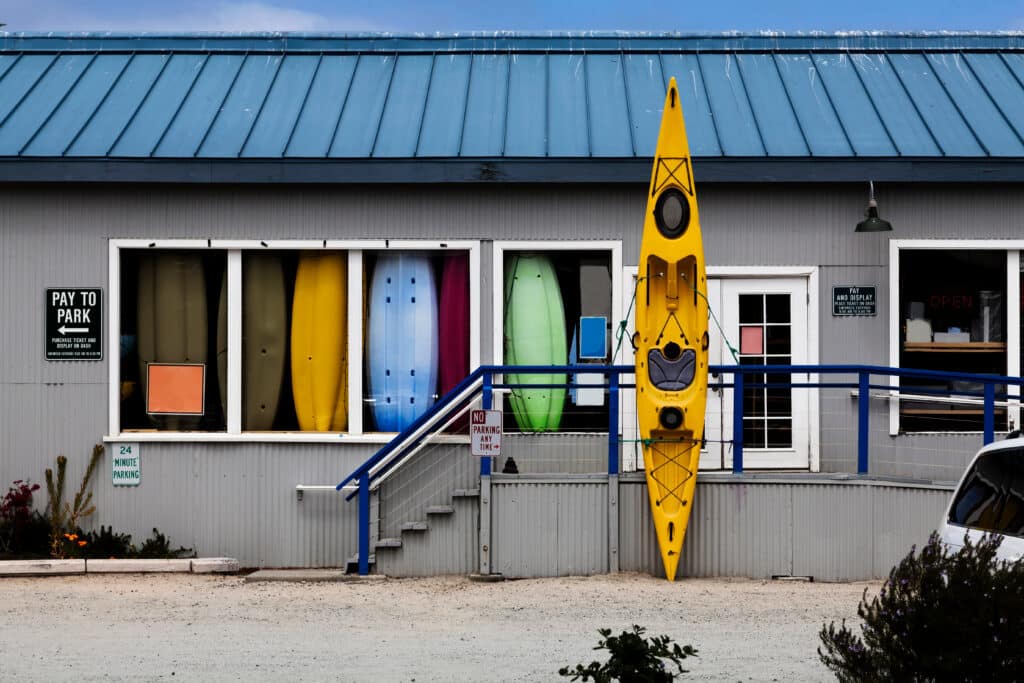
The best way to start your first kayaking trip is to rent your gear from a local outfitter. They will have good, safe gear and often newer products with the latest technologies. They’ll know how to fit you and what gear to start you out with.
You may even get some good tips on where to go. You could still try the sport if you are not a strong swimmer. Ensure you are comfortable with your PFD and what to do if you find yourself in the water.
Now, if you are not a swimmer and are afraid of the water, this sport may not be for you. Before your first time, look for the best local option and choose where to go, considering any bad weather or cold weather, calm waters, water temperature, and windy conditions.
What Gear is Needed to Get You Started?
Regarding kayaking gear, there are only a few items you’ll need to get started. Once you become more involved in the sport, you may find additional items to expand your recreation opportunities. But for starters, you need a kayak, a kayak paddle, and a life jacket.
With these three items, you are ready to go. You might want a dry bag/sack to pack your phone/camera, sunscreen, and snacks to make it more memorable. Not to state the obvious, but you may need means to transport your kayak to your destination.
Now, kayaking can be considered exercise; you’ll be using your arms to paddle around the water you are on. Remember where you are going and how far to go since you will typically need to get yourself back to your departure spot.
For your first few trips, plan for short trips. You may wear yourself out quickly, so rent the right kayak designed for the water you will explore.
A Bit of Advice
Now you’ve got the gear rented, you’ve figured out where you and your fellow kayakers are going, and you’ll need to know/learn the basics. Kayaking is pretty straightforward, but there are a few things to be aware of. It’s a good idea to video search for the best techniques and basic paddle strokes for kayaking.
Also, getting in and out of the kayak is a plus. It can be tricky, so if you are launching from the shore (easiest, in my opinion), place the kayak in the water far enough from the shore that when you put some of your weight into the kayak, it will slightly touch the ground.
This allows you to get in without the boat rocking so much. The same goes for when returning to the shore. You will find that very little body shifting once in the kayak will rock the kayak about.
Kayaking Terms
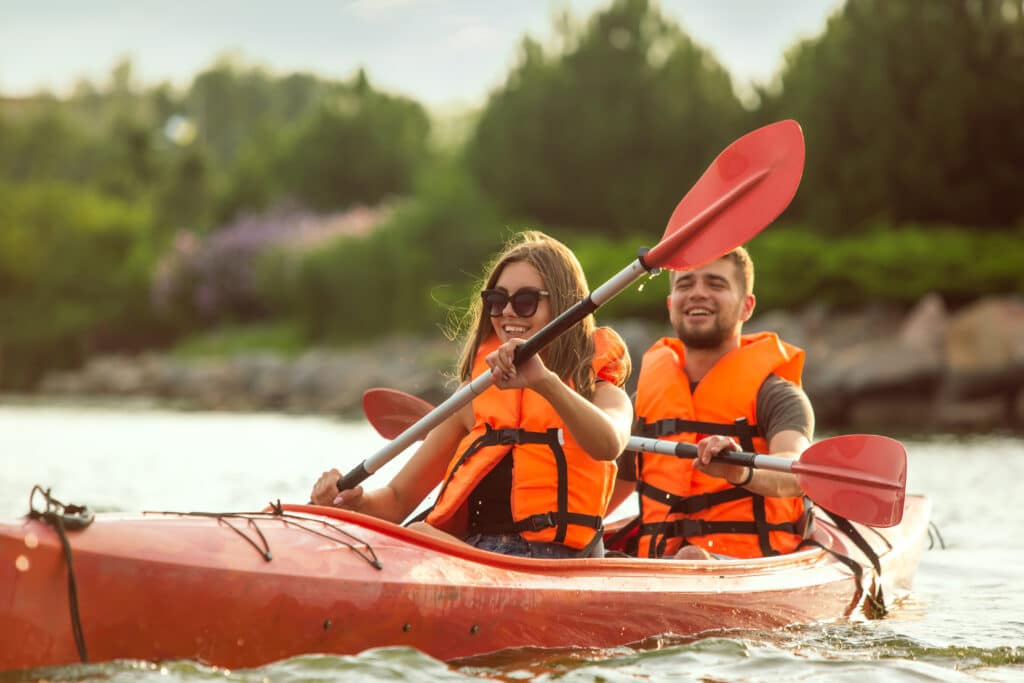
PFD – Personal Flotation Device, a life vest, is a fitted item that keeps you afloat if you find yourself in the water. Make sure it fits and does not encumber movement.
Recreational Kayaks – A kayak for the casual paddler into recreational kayaking on lakes and slow-moving waters.
Sea Kayaks – A kayak designed for paddling on open waters of lakes, bays, and the ocean.
Single Kayaks – A one-person kayak
Tandem Kayaks – A kayak for two people
Inflatable Kayaks – PVC material with air chambers for buoyancy for floating on water.
Top Kayaks – A kayak where one sits on the boat’s top instead of inside.
Wet Exit – An exit from the kayak while on the water during a capsizing event. Here’s a link with excellent videos performing a wet exit; please familiarize yourself with the technique. Click Here.
Dry Bag/sack – A dry bag is a flexible bag for items you wish to prevent getting wet. When sealed, it becomes watertight.
Thigh Braces – Often made of foam, giving you a better connection to the boat. It can be used to help with balance in the water.
Foot Braces – These allow you to sit in your kayak and aid your paddling posture comfortably.
Cockpit – This is the opening of the boat where you will sit.
Bilge Pump – A pump that allows you to pump out any water that has made its way into the boat’s interior. A spray skirt helps prevent water intrusion.
Spray Skirt – A flexible, waterproof material that covers the kayak’s cockpit with a single hole for your waist. Prevents water intrusion. Typically used for whitewater or offshore kayaking.
Kayak Paddle – A shaft with paddles at both ends where a user uses a front-to-back for propulsion.
Sweep Strokes – One sweeps the paddle blade in an arc by pushing the water; this will turn the kayak.
Forward Stroke – Place the paddle blade forward and pull it through the water towards yourself.
What Are Some Good Kayaking Destinations?
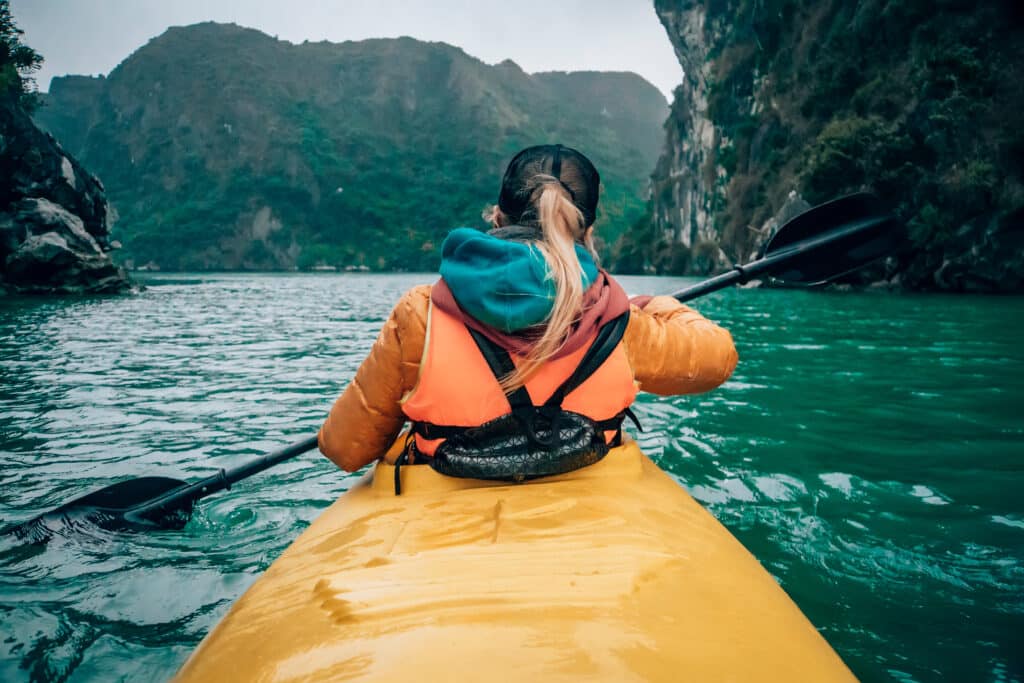
Kayaking is a versatile sport with many kayaks designed for a particular type of water. As a beginner, I highly stress keeping to small lakes and streams where it is more likely to be shallow water. You should not expand your exploration locations until you are comfortable with your equipment and have practiced self-arrest techniques.
Once you have improved your skills and are ready to take them to the next level, you may purchase your kayak. Then start expanding your locations to more open water and long trips, choppier waters. Bays, rivers, and offshore kayaking can be another awesome next step if available.
Then there is whitewater kayaking, a whole new level requiring much knowledge from an experienced paddler.
A great resource we use is recreation.gov. You can use a desktop or download the mobile app to search for kayaking spots in your area.
What is Some Kayaking Safety?
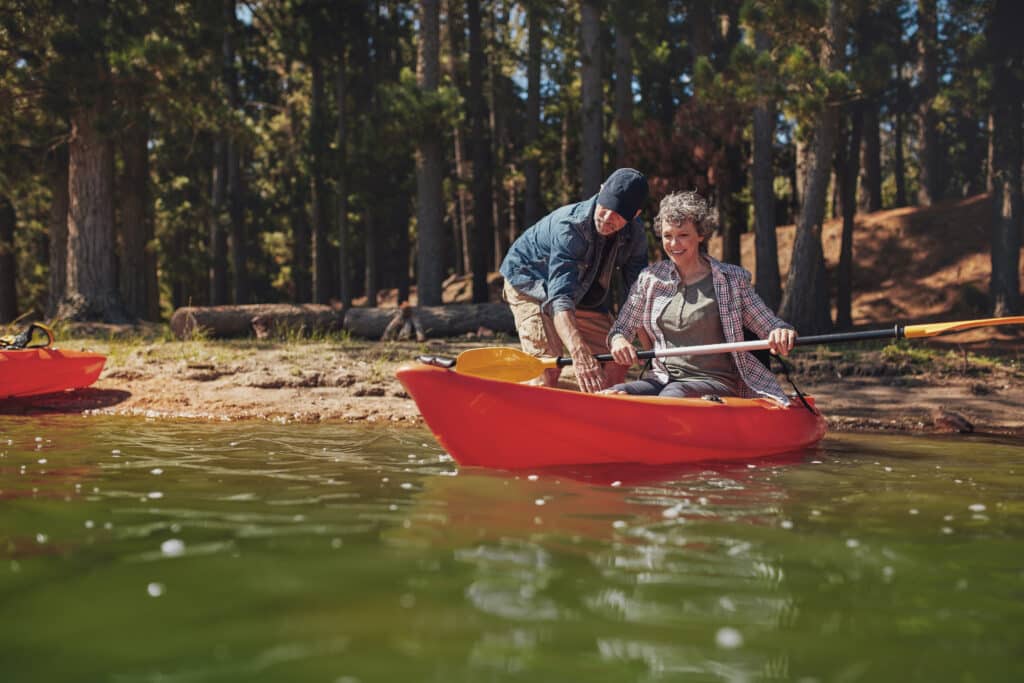
Safety should always be at the forefront of your mind. Do not get out of your comfort zone or skill level. Always, always kayak with a friend. Make sure your PFD fits and know how to use it—lastly, don’t forget your sunglasses and sunscreen. Oh, and have a spare set of clothes in the car; a towel is nice too.
Now, get out there and have some fun!
